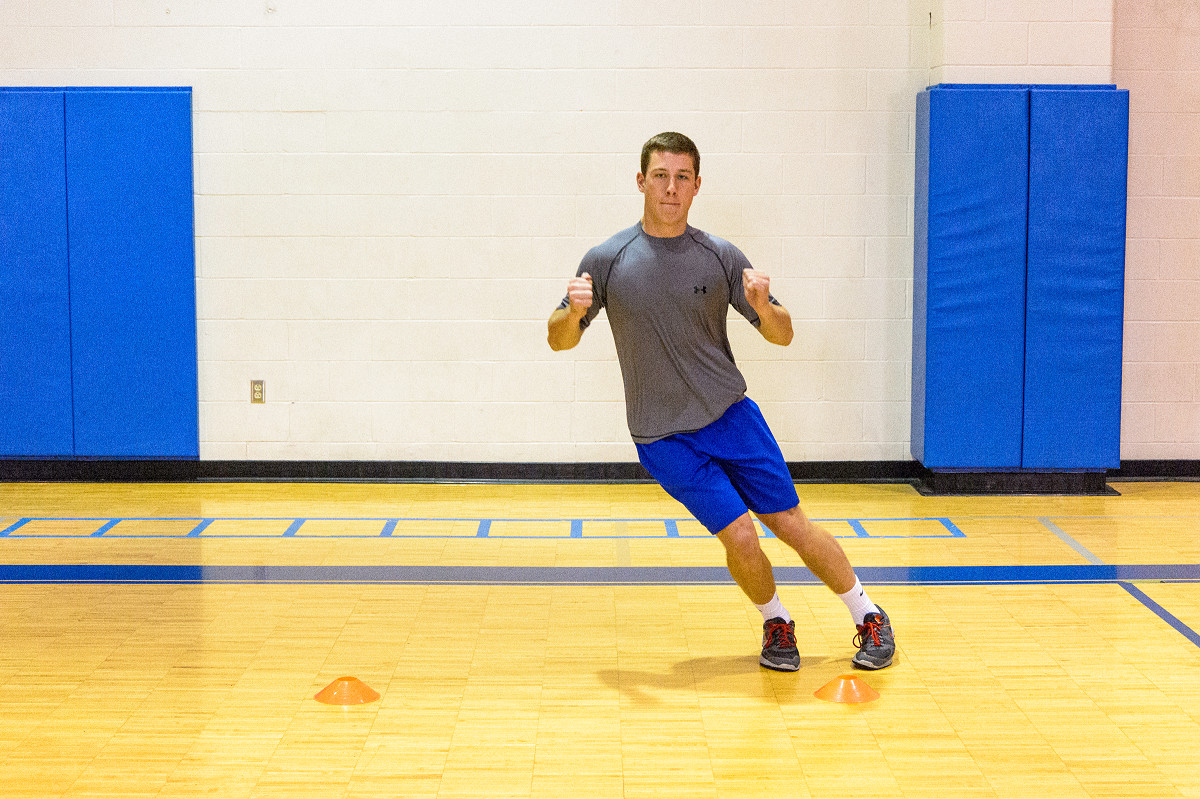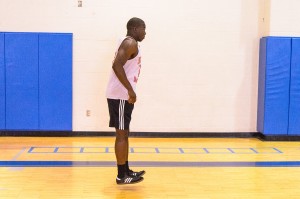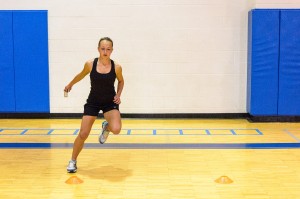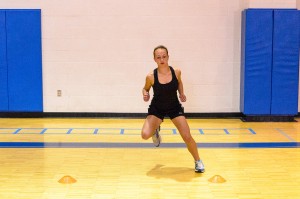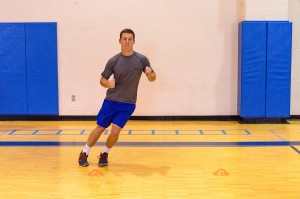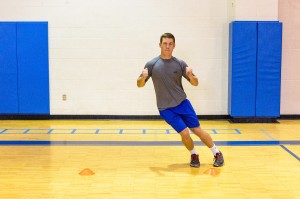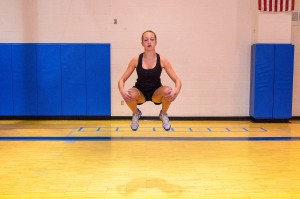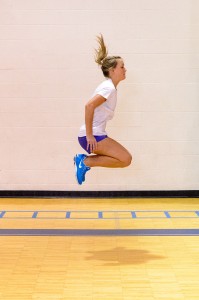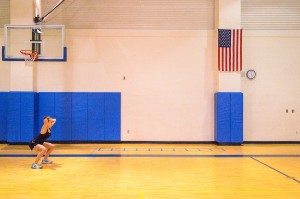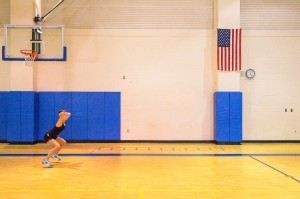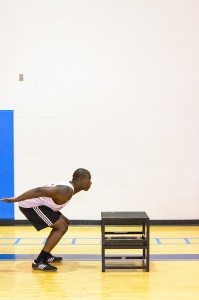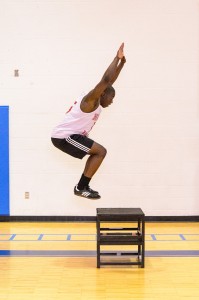This week we continue from part 1 of how plyometrics can build better bodies. We will be looking at the power of the vertical jump, which can help in a variety of sporting activities, including skiing, basketball, track & field, baseball, rugby, bicycling, swimming, tennis, and competitive power lifting. There are many good things in store for those who are willing to jump outside the box, so to speak; and we proudly introduce this excerpt from Plyometrics (Human Kinetics, 2013), written by Donald Chu and Gregory Myer.
MECHANICS OF VERTICAL JUMPING
Vertical jumping is a component of most sport activities. People often take it for granted that an athlete instinctually knows how to jump vertically. In actuality, jumping vertically is a skill that can and should be taught to athletes. If we examine the event a little more closely, we find that the jump is preceded by a countermovement in which the center of gravity drops rapidly. This is seen as a flexing of the hips, knees, and ankles of the athlete. The trunk tilts slightly forward, and the arms are pulled to a position behind the midline of the body.
Before the vertical movement of the body, a rapid extension of the hips, knees, and ankles takes place, which is largely the result of force developed by the arms and legs. The arms should be brought forward rapidly and allowed to travel to a position above and in front of the shoulders. The quick bend of the knees to lower the center of gravity is accompanied by moving the arms into a position where the shoulders are extended and the arms are behind the body. This position of the arms allows the athlete to develop force that is directed into the ground as the arms come forward.
The arms can contribute to the development of force into the ground only while they are swinging down toward the ground. The force put into the ground is then recovered as the arms move past the midline and into a position in front of the shoulders. The athlete can imagine that he just compressed a spring by moving into the squat position with the legs and swinging the arms down rapidly; then as he starts to extend the legs and as the arms move past the midline of the body, the pressure on the spring is released, and it follows its natural path—namely, up! Therefore, athletes must get the arms as far back and as straight as possible for maximum force development.
The more the arms bend at the elbow, the faster they will come through, but the less they will contribute to overall force development. A practical view of this is to compare the arm swing of elite triple jumpers with that of elite high jumpers. Longer levers develop more force; shorter levers move more rapidly. Whereas maximum force is important for the triple jumper, high jumpers using the flop technique must rely more on arm speed to effectively carry out their technique.
Because of the arms’ large contribution to overall jump height, resistance training exercises that strengthen these areas should be included in all jump training programs. Here are some of the exercises that are important in the development of the arms for jumping:
- Reverse pull-down
- Triceps dip
- Shoulder swing with dumbbells
- Straight-arm pull-down
- Seated row
- Backward medicine ball throw
- Underhand medicine ball throw
SUMMARY
- Performance is enhanced as a result of training with plyometric exercises, and it is optimized when the activity imparts higher forces and faster speeds of movement.
- The amortization phase is a key determinant in whether performance will be enhanced from the stretch-shortening cycle.
- Prolonged contact times should be avoided because they will limit the benefits achieved from plyometric training. In addition, prolonged contact times may be indicative of excessive intensity during the loading (eccentric) phase.
- When the transition between the loading and unloading phases is not continuous, the effects of the SSC will be lost.
TWO-FOOT ANKLE HOPS
LEVEL- Low
EQUIPMENT-None
SPORTS-Baseball, softball, tennis, volleyball
START:
Stand with feet shoulder-width apart and the body in a vertical position.
ACTION:
Using only the ankles for momentum, hop continuously in one place (figure 9.5). Extend the ankles to their maximum range on each vertical hop.
SINGLE-FOOT SIDE-TO-SIDE ANKLE HOP
LEVEL- Low
EQUIPMENT- No equipment is required but cones placed 3 to 4 feet (91 to 122 cm) apart may be used as borders.
SPORTS- Track and field (jump events, sprints, and throwing events)
START
Stand on one foot. If using cones, stand between the cones.;
ACTION
Hop from one foot to the other (figure 9.6). If using cones, land on the right foot next to the right cone, then land on the left foot next to the left cone. Continue hopping back and forth.
SIDE-TO-SIDE ANKLE HOP
LEVEL- Low
EQUIPMENT- No equipment is required, but cones may be used as borders.
SPORTS- Baseball, softball, figure skating, tennis
START:
Stand with feet shoulder-width apart and the body in a vertical position.
ACTION:
Using both feet, jump from side to side (figure 9.7); the jump should cover a span of 2 to 3 feet (61 to 91 cm). Produce the motion from the ankles. Keep the feet shoulder-width apart and land on both feet at the same time.
TUCK JUMP WITH KNEES UP
LEVEL- Moderate to high
EQUIPMENT- None
SPORTS- Bicycling, diving, weightlifting
START:
Stand with feet shoulder-width apart and the body in a vertical position; do not bend at the waist.
ACTION:
Jump up, bringing the knees up to the chest and grasping the knees with the hands (figure 9.8) before the feet return to the floor. Land in a standing vertical position. Repeat the jump immediately.
TUCK JUMP WITH HEEL KICK
LEVEL- Moderate
EQUIPMENT- None
SPORTS- Downhill skiing, figure skating, gymnastics
START:
Stand with the feet shoulder-width apart, the body in a straight vertical position, and the arms by your sides.
ACTION:
Keeping the knees pointed down (still in line with the body), jump and kick the buttocks with the heels (figure 9.9). Repeat the jump immediately. This is a quick-stepping action from the knees and lower legs. Swing the arms up as you jump.
OLYMPIC HOPS
LEVEL- Moderate
EQUIPMENT- A 10- to 20-yard stretch of surface
SPORTS- Downhill skiing, in-line skating, rugby, wrestling
START:
Assume a deep-squat position (figure 9.39) with the upper body straight and the hands held behind the head with fingers interlocked.
ACTION:
Initiate a small hop with the body in a vertical posture and both feet coming off the ground (figure 9.39). Hip and knee movement should be less than full extension. Maintain the squat position throughout the hop execution so that you use the hips and adductors to initiate and continue the movement.
JUMP TO BOX
LEVEL- Low to moderate
EQUIPMENT- A box 6 to 12 inches high with a top surface no smaller than 24 inches square
SPORTS- Diving, netball
START:
Stand on the ground with feet shoulder-width apart, facing a box.
ACTION:
Squat slightly and, using the double-arm swing (figure 9.41a), jump from the ground onto the box (figure 9.41b).
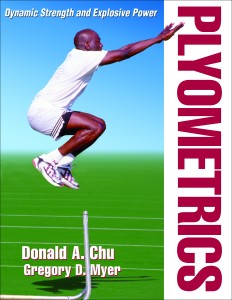 Plyometrics is written by Donald Chu, who pioneered research-supported plyometric training in the Western hemisphere and is revered throughout the strength and conditioning community for enhancing modern sports’ most defining athletic factor: power. Plyometrics is now available on Amazon
Plyometrics is written by Donald Chu, who pioneered research-supported plyometric training in the Western hemisphere and is revered throughout the strength and conditioning community for enhancing modern sports’ most defining athletic factor: power. Plyometrics is now available on Amazon and bookstores everywhere, as well as online at www.HumanKinetics.com.
About Dr. Eric J. Leech
Eric has written for over a decade. Then one day he created Urbasm.com, a site for every guy.
